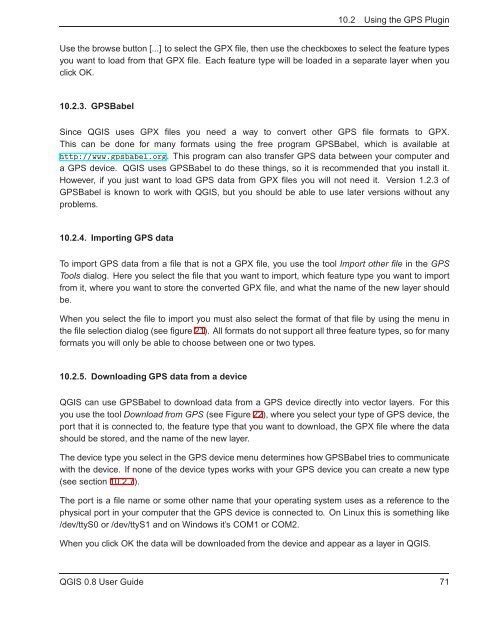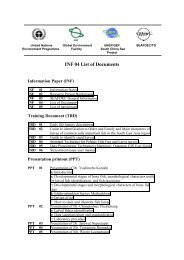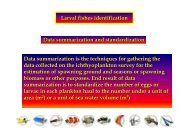TRD 05: Data Presentation techniques (Mapping) Quantum GIS ...
TRD 05: Data Presentation techniques (Mapping) Quantum GIS ...
TRD 05: Data Presentation techniques (Mapping) Quantum GIS ...
Create successful ePaper yourself
Turn your PDF publications into a flip-book with our unique Google optimized e-Paper software.
10.2 Using the GPS Plugin<br />
Use the browse button [...] to select the GPX file, then use the checkboxes to select the feature types<br />
you want to load from that GPX file. Each feature type will be loaded in a separate layer when you<br />
click OK.<br />
10.2.3. GPSBabel<br />
Since Q<strong>GIS</strong> uses GPX files you need a way to convert other GPS file formats to GPX.<br />
This can be done for many formats using the free program GPSBabel, which is available at<br />
http://www.gpsbabel.org. This program can also transfer GPS data between your computer and<br />
a GPS device. Q<strong>GIS</strong> uses GPSBabel to do these things, so it is recommended that you install it.<br />
However, if you just want to load GPS data from GPX files you will not need it. Version 1.2.3 of<br />
GPSBabel is known to work with Q<strong>GIS</strong>, but you should be able to use later versions without any<br />
problems.<br />
10.2.4. Importing GPS data<br />
To import GPS data from a file that is not a GPX file, you use the tool Import other file in the GPS<br />
Tools dialog. Here you select the file that you want to import, which feature type you want to import<br />
from it, where you want to store the converted GPX file, and what the name of the new layer should<br />
be.<br />
When you select the file to import you must also select the format of that file by using the menu in<br />
the file selection dialog (see figure 21). All formats do not support all three feature types, so for many<br />
formats you will only be able to choose between one or two types.<br />
10.2.5. Downloading GPS data from a device<br />
Q<strong>GIS</strong> can use GPSBabel to download data from a GPS device directly into vector layers. For this<br />
you use the tool Download from GPS (see Figure 22), where you select your type of GPS device, the<br />
port that it is connected to, the feature type that you want to download, the GPX file where the data<br />
should be stored, and the name of the new layer.<br />
The device type you select in the GPS device menu determines how GPSBabel tries to communicate<br />
with the device. If none of the device types works with your GPS device you can create a new type<br />
(see section 10.2.7).<br />
The port is a file name or some other name that your operating system uses as a reference to the<br />
physical port in your computer that the GPS device is connected to. On Linux this is something like<br />
/dev/ttyS0 or /dev/ttyS1 and on Windows it’s COM1 or COM2.<br />
When you click OK the data will be downloaded from the device and appear as a layer in Q<strong>GIS</strong>.<br />
Q<strong>GIS</strong> 0.8 User Guide 71
















